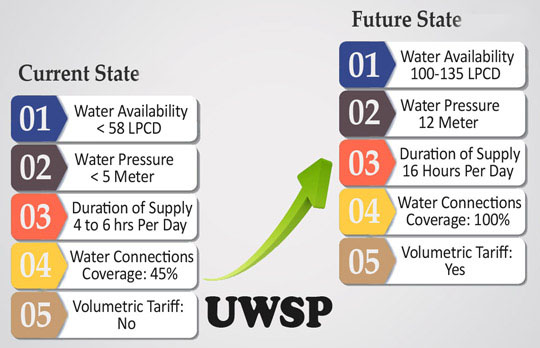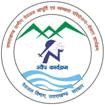
PROGRAM DESCRIPTION
- The GoUK, through a Government Order (GO), has recently announced World Bank Funded Uttarakhand Water Supply Program for Peri-urban Areas (UWSP or the Program) as a priority program.
- The Program aims to increase access to improved water supply services in peri-urban areas in Uttarakhand.
- Water supply services in peri-urban areas have not been a focus of any GoI or GoUK project in Uttarakhand in the past.
- Rapid growth in and of these areas, strong economic linkages with large cities, and the resultant increase in demand for public services including water supply, indicate an urgent need to address the challenges in these areas.
- The scope of the Program covers the entire GoUK’s water supply program for peri-urban areas.
- The Program cost of USD 150 million over six years constitutes 100 percent of GoUK’s water supply program for peri-urban areas (details in Annex 1).
- The targeted peri-urban areas in the UWSP are defined as those which meet the criteria of (a) density as minimum 200 persons/sq.km (b) within 10 km aerial distance from the existing limits of ULBs and (c) not upgraded/merged into Statutory Town.
- The peri-urban areas include 31 CTs and 4 CT like areas that are rapidly expanding in the four Growth Clusters - Growth Cluster I: DehradunRishikesh, Growth Cluster II: Haldwani-Kathgodam, Growth Cluster III: Hardwar-Roorkee, Growth Cluster IV: Khatima, and some stand-alone CTs.
Program Development Objective (PDO) and Key Results
The development objective of the ‘Program’ is to increase access to improved water supply services in peri-urban areas in Uttarakhand.
Results Areas: The Program would focus on two results areas that contribute to the achievement of the PDO:
Result Area 1: Increased access to improved water supply services in peri-urban areas.
Result Area 2: Improved policy, planning and M&E systems for water supply program in periurban areas.
Results Indicators: The following outcome indicators would be used to measure achievement of the PDO:
( i ) a) Total Number of people receiving improved water supply services in peri-urban areas;
b) Number of people receiving improved water supply services in peri-urban areas - female;
( ii ) a) Total Number of beneficiaries;
b) Number of beneficiaries - female;
(iii) Number of peri-urban areas with improved policy, planning and M&E systems implemented.
A set of intermediate results indicators would be used to measure and track intermediate steps towards achieving the PDO. Details, including indicator definitions and targets, are provided in Annex 2. Table 1 below provides a summary of the Program results framework. The results framework consists of two types of results indicators: those that are linked to disbursements, referred to as DLIs, and those that are not linked to disbursements, referred to as ‘other results indicators.’ The achievement of DLIs triggers Bank disbursements to the Program. The Program is expected to benefit about 0.5 million people, 50 percent of whom are female beneficiaries.
List of stakeholders/Roles
- World Bank
- SWSM
- PIU
- FIU
- Contractor
- Consumer
LIST OF SCHEMES

